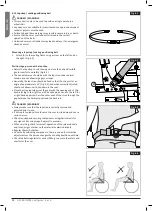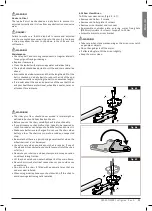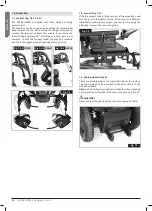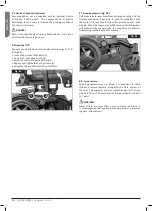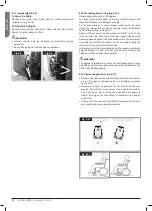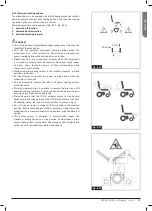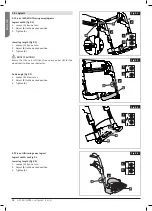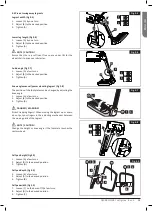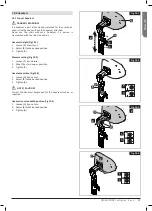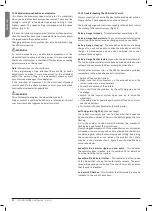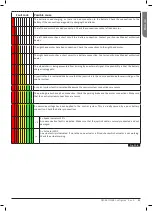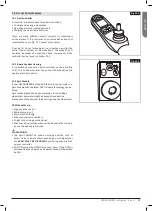
EN
GLISH
Q100R-Q200R Configured Rev. A
31
As guidance for safe use on a slope we reviewed the effect of
chair stability at two user weights 75kg and maximum user
weight for both the Q100R (125kg) and Q200R models (136kg).
The graphic below (Fig. 8.7) shows the range in rearward
dynamic stability for Q100R and Q200R when configured in
least and most stable conditions* and when tested with 75kg
and maximum user weights.
Maximum user weight range is shown by solid lines.
75kg user weight range is shown by dashed lines.
* Least stable configuration defined as:
Max seat depth (510mm), maximum seat tilt (6°) and
maximum recline (12°).
Most stable configuration defined as:
Minimum seat depth (410mm), minimum seat tilt (0°) and
minimum recline (0°).
5°
10°
15°
Q100R
Q200R
125kg
75kg
136kg
75kg
Fig.8.7
CAUTION!
• These figures are meant as a guide to understand the effect
of user weight and chair configuration on dynamic stability
• Real world stability can be affected by body composition,
slope surface conditions, accessories, alterations to chair
programming and so forth
• Chair may loose traction/slide before tipping on steeper
slopes
8.10 Slopes (Fig.8.6):
The following instructions explain
how to manoeuvre correctly on
steep ramps and slopes, especially
in the course of descent.
WARNING!
• If your chair has a powered seat
tilt, powered recline or manual recline back, we strongly
recommend that you bring the backrest into an upright
position and set the seat tilt to the level position.
• If you stop on an incline, start off slowly and, if necessary,
lean forward to counteract the tendency of the front wheels
to rise.
• On descents it is important not to allow the wheelchair to
exceed normal speed. Indeed, the safest course is to go down
steep hills slowly and to stop immediately if you have any
doubts about the steering.
• If the chair gathers speed, move the joystick to its central
position to slow down, or stop completely.
• Start off again slowly and do not allow speed to increase.
Make sure the automatic brakes are engaged.
• Climbing or descending a slope with the automatic brakes
disengaged can be dangerous.
Fig.8.6
8.9 Transfers (Fig.8.5):
Always position the wheelchair
close to the place where the
transfer will be carried out. It is
important
that the controller is turned OFF,
so that the wheelchair will not
move throughout the procedure.
The wheelchair is highly stable
owing to its weight. Do not stand up on the footrests at any
time during the transfer.
Fig.8.5








